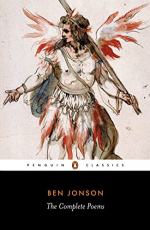|
This section contains 357 words (approx. 1 page at 400 words per page) |

|
The Description of Cooke-ham Summary & Study Guide Description
The Description of Cooke-ham Summary & Study Guide includes comprehensive information and analysis to help you understand the book. This study guide contains the following sections:
This detailed literature summary also contains Quotes and a Free Quiz on The Description of Cooke-ham by Aemilia Lanyer.
The following version of the poem was used to create this guide: Lanyer, Aemelia. The Description of Cooke-Ham. Perseus, Tufts University. https://www.perseus.tufts.edu/hopper/text?doc=Perseus%3Atext%3A1999.03.0077
Note that all parenthetical citations within the guide refer to the lines of the poem from which the quotations are taken.
Aemelia Lanyer, born Aemelia Bassanio and variously called Emilia or Amelia Lanier or Bassanio-Lanier, was the first English woman to consider herself a professional poet. She was born in England around 1569, though descended from Italian noble parents who worked as musicians in the Tudor court. She was baptized as an infant, as was required, but was almost definitely of Jewish descent. Many scholars believe that Lanyer and her family continued to secretly practice Judaism, though Jews had been expelled from England and the religion was illegal. Some have posited that Lanyer was the mysterious "Dark Lady" featured in Shakespeare's sonnet sequence, but this notion is largely conjecture that has yet to be corroborated. After her father's death, she was educated by Susan Bertie, Countess of Kent, who taught her Latin and poetry.
Lanyer was the mistress of the Baron Hundson, a position she seems to have enjoyed, but had to be married off to her cousin when she became pregnant. The marriage was an unhappy one. After having her son and a daughter who died in infancy, at the age of 46, Lanyer published her volume of poetry, Salve Deus Rex Judaeorum (Hail God, King of the Jews). After her husband's death, she opened a school. She died at the age of 76.
"The Description of Cooke-Ham" is a country house poem, and is often considered the first of its genre. While Ben Jonson is most often credited with introducing the genre in English with his poem "To Penshurst," Lanyer's "Cooke-Ham" predates Jonson's by four years. In the poem, the speaker provides readers with a virtual "tour" of the country estate, idealizing its structure and surrounding landscape as an Edenic retreat for women. Contemporary scholars often turn to Lanyer, and "Cooke-Ham" more specifically, for insight into proto-feminist ideology in the English Renaissance.
Read more from the Study Guide
|
This section contains 357 words (approx. 1 page at 400 words per page) |

|



